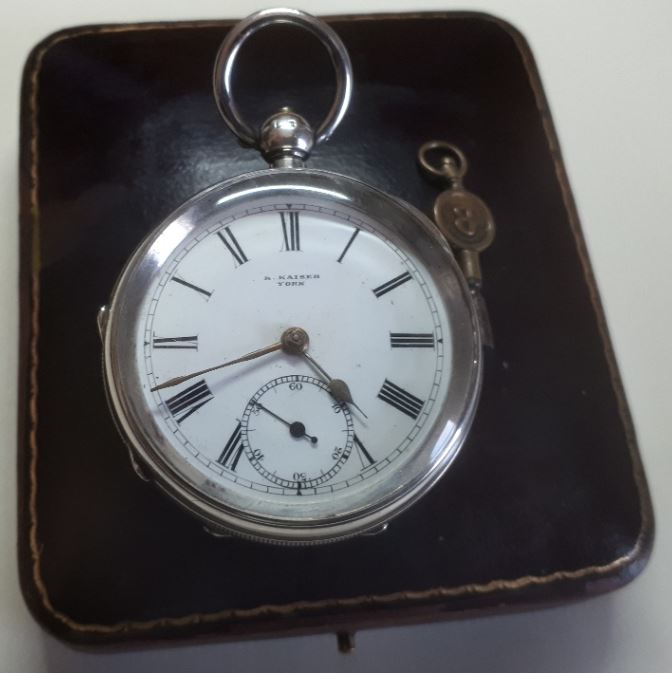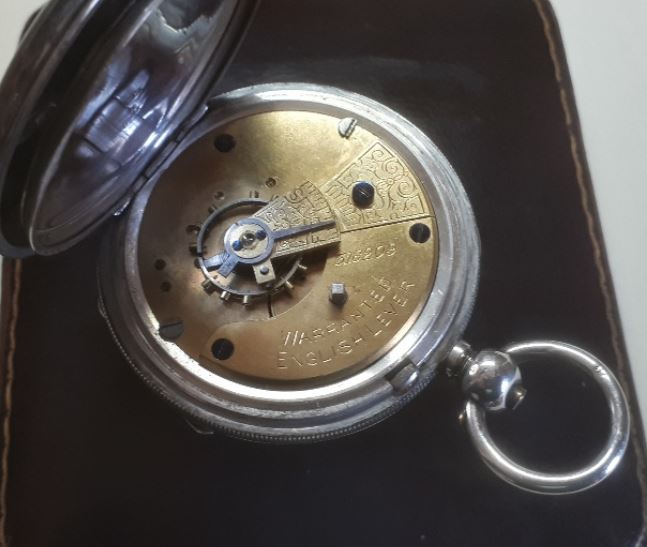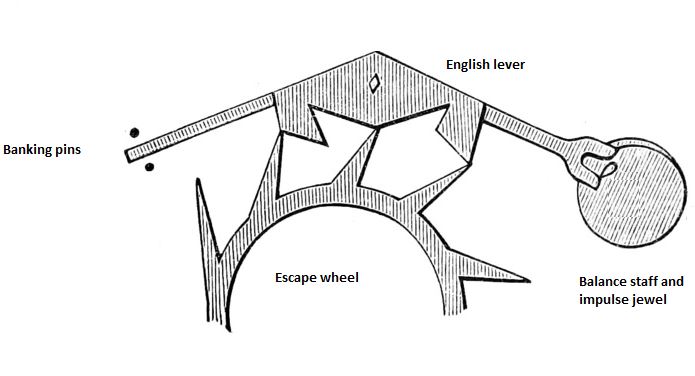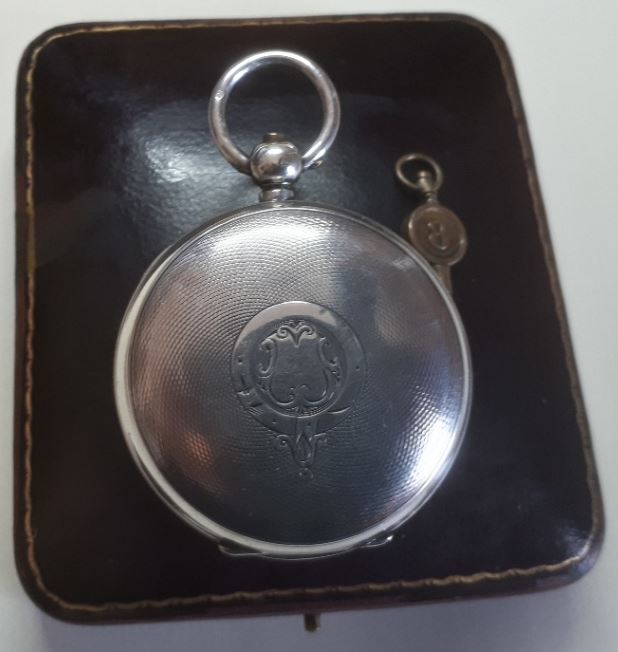Last updated on May 30, 2024
This English lever pocket watch has a key-wind, key-set movement, which is ticking away nicely in front of me as I type. It is an open-faced pocket watch in good overall condition. A winding key (size 8) was included with the watch. This is part of my personal collection and the first English lever pocket watch I have owned.

To set this watch you need to open the dial cover, insert the key over the hand’s arbor and turn to the correct time. To wind the watch, you need to open the outer case back cover, by depressing the button on the stem. Then the key is inserted into the winding hole and turned. It takes about eight clockwise turns to fully wind and you can feel the tension build as you wind. The covers all fit neatly, the hinges are straight and the covers close nicely with a satisfying click. It does take some practice to open the covers, each cover seems to have a sweet spot, which allows it to pop open easily.
Movement
In addition to the outer case back cover, the movement is protected by an inner hinged cover. There is a small push button that needs to be activated to open the inner cover. It can be quite challenging to open. The movement is stamped ‘Warranted English’ lever and numbered 3126209.

In 1887 the British Merchandise Marks Act stopped foreign manufacturers from falsely claiming that their goods were British-made and selling them in Britain and Europe. Although it’s marked as ‘Warranted English’, many English makers were incorporating a proportion of Swiss parts in their products in order to reduce their manufacturing costs. There were court cases concerning how much “Swiss work” could be included before a watch could no longer legally be described as ‘English’.

The dial is branded ‘R Kaiser, York’. The ‘R’ is slightly damaged, but otherwise, the face is in reasonable condition. As the dial cover needs to be opened to set the time, the dial has some markings from exposure to the elements. The dial is in good condition, but there are a few very minor marks or stains on the surface. These are so minor that they are virtually invisible to the naked eye.
Case
The watch measures 50mm in diameter excluding the stem and the loop. The case is silver and there are hallmarks inside both of the case backs for Birmingham 1896 with a maker’s mark for the case maker William Ehrhardt, Time Works, Barr Street, Hockley, Birmingham & Hatton Garden, London. There is also engine turned detail to the case back, along with a vacant cartouche in the centre. The case has a genuine patina, with light surface marking from use. However, overall it is in good condition for an 1890s timepiece.

In the 1881 Census records for York, there is a Richard Kaiser, aged 25, born in 1857 whose occupation is listed as Watchmaker. He operated from 10 Church Street, York. He appears again in the Census records for 1891 and 1901. In the 1911 Census records, there is a Frederick Richard Kaiser, also born in 1857, listed as a watch repairer and shopkeeper. These could possibly be the same person. There were other people with the surname of Kaiser who were listed as watch repairers in the late 19th and early 20th centuries. These could all be the descendants of the original Richard Kaiser.
Watchmakers
During this period, the term watchmaker was used fairly freely. In reality, you had watch manufacturers who made the components, watchmakers who assembled the components and retailers who styled themselves as watchmakers. I suspect that, as was normal for the time, Richard Kaiser purchased the complete watch from the manufacturer William Ehrhardt, a noted manufacturer of ébauche movements. The enamel watch dial would have also been branded by William Ehrhardt. One day when I gain the courage to take this watch apart, I will remove the dial and expect to see the William Ehrhardt hallmark on the movement.
The acrylic crystal lens is in nice condition with no obvious marks or scratches. The pocket watch has gold hands and a blued steel sub-seconds hand. Overall, it is in very good condition for a watch that is nearly 130 years old.
Timekeeping
In a twenty-four-hour time test, the watch performed really well. It actually ran about two minutes fast, which I’m quite happy with. I’ve always preferred watches, antique and modern, that run slightly fast. After all, I would always rather be early for an appointment, than late. The power reserve from a full wind is approximately 26 hours.
This is currently, a favourite in my collection. It is presentable and dependable and I’m getting some regular use from this antique pocket watch.
Related content
Lever escapement at Wikipedia